You’ve just spent a small fortune on the perfect Phalaenopsis orchid. Now you want to know how to care for it properly so that it will live and thrive in your home. But where do you start?
If you follow these simple tips, your Phalaenopsis orchid should stay healthy and happy for years to come!
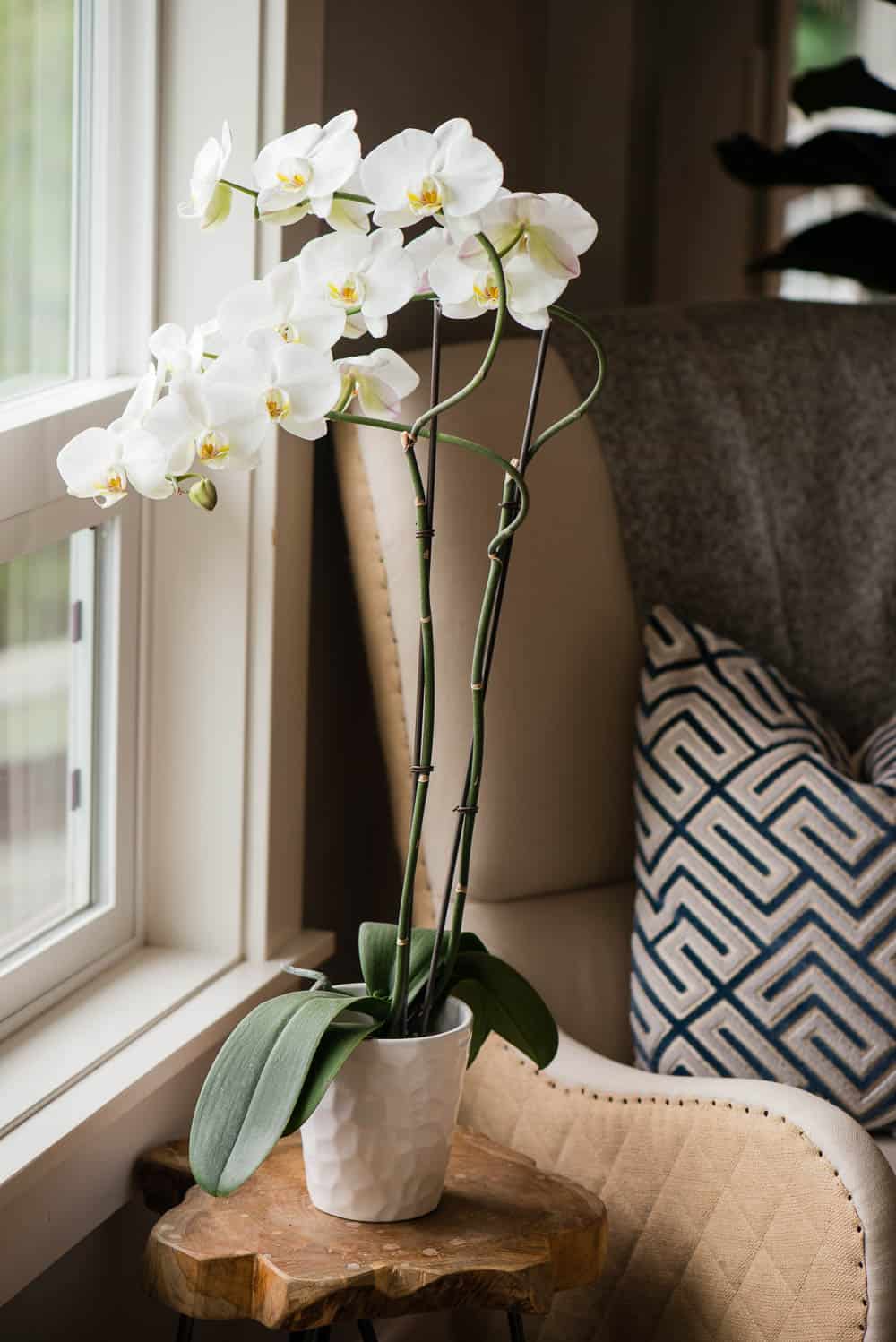
What is an orchid plant and where does it come from?
Orchid plants are a type of perennial flowering plant that is found in tropical and subtropical regions around the world.
The Phalaenopsis orchid is a type of orchid plant that is native to Southeast Asia, and it is one of the most popular orchids grown today. Phalaenopsis orchids are epiphytic plants, which means that they grow on other plants (usually trees) and derive their moisture and nutrients from the air and rain.
In their natural habitat, Phalaenopsis orchids can be found growing at altitudes of up to 3,000 feet. They typically bloom in the spring and summer months.
Phalaenopsis orchids are often referred to as a moth orchid because the shape of their flowers resembles that of a moth in flight. These beautiful flowers come in a wide range of colors, including white, pink, purple, and red.
The different types of Phalaenopsis orchids
There are many different types of orchids, and each type has its own specific care requirements.
Phalaenopsis orchids are common orchids readily found at grocery stores. They are considered to be a sympodial orchid, which means that it grows by sending out new shoots from the base of the plant. These new shoots will eventually develop into a new orchid plant.
When buying a Phalaenopsis orchid, it is important to know the type of Phalaenopsis orchid that you are buying, so that you can provide the correct care.
Here are some of the most common types of Phalaenopsis orchids:
- Phalaenopsis Amabilis
- Phalaenopsis Equestris
- Phalaenopsis Gigantea
- Phalaenopsis Lindenii
- Phalaenopsis Schilleriana
- Phalaenopsis Stuartiana
- Phalaenopsis Violacea
How much do orchid plants cost?
The cost of an orchid can range anywhere from $6 for a small mini orchid to hundreds of dollars if you buy something exotic or multiple plants grouped together in one arrangement.
I have about ten orchid plants in my home right now and I bought all of them from Trader Joe's. Their plants range from $6-$13. That's about what I'm willing to pay for a flower arrangement that needs to be tossed after a week, so why wouldn't you always choose an orchid plant instead?
Fresh cut flowers look great at first, but then they start to wilt and fall apart and the water gets slimey. Honestly, they're a huge waste of money, in my opinion. Next time you want to buy a bouquet of flowers at the store, I strongly urge you to buy an orchid plant instead and follow these tips to see how many times you can bring it back to life!
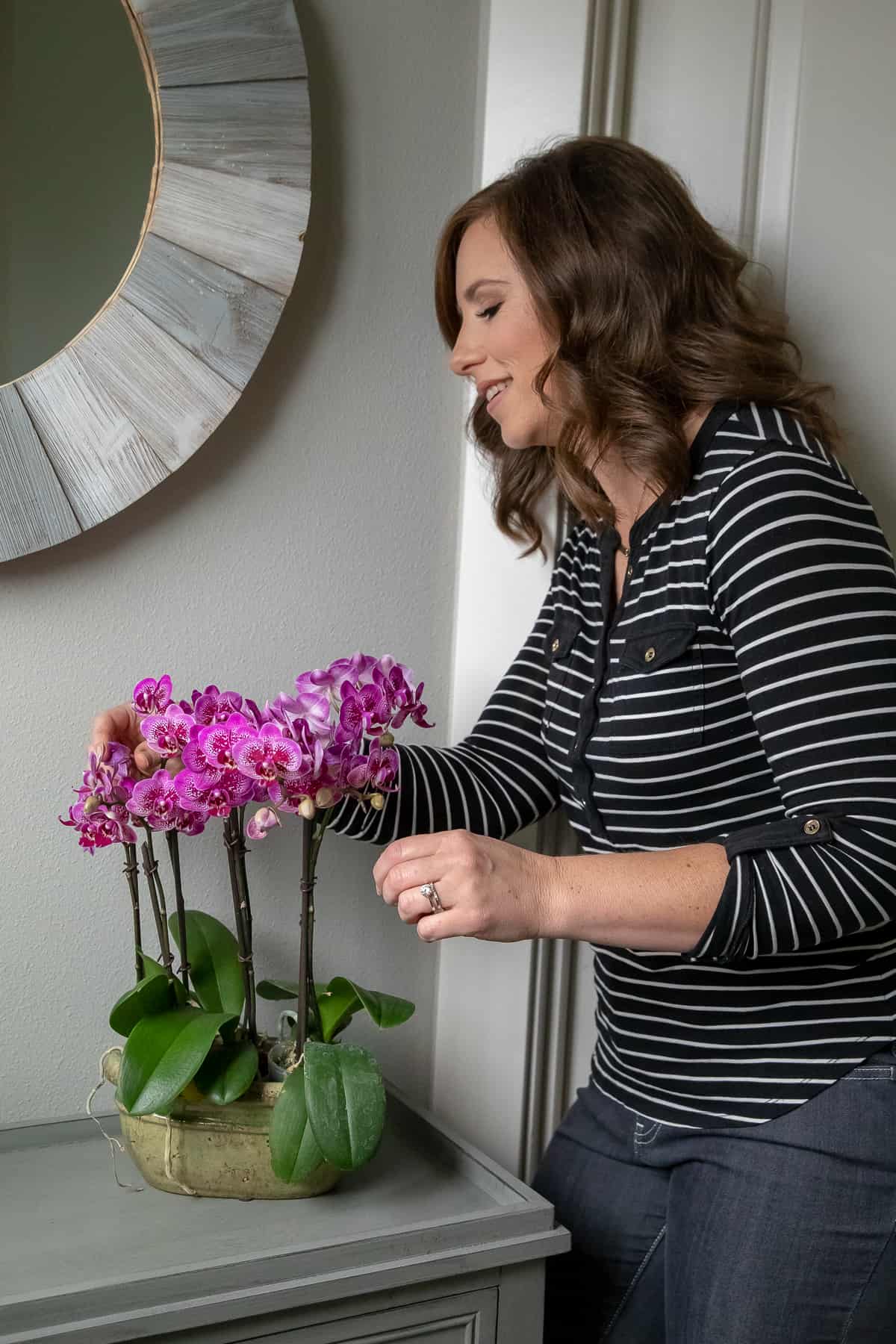
Choosing the right spot for your orchid
One of the most important things to consider when caring for your orchid is where to place it. When considering where to place your orchid plant, you must consider how much light the space receives as well as the temperature and humidity. Proper orchid care will maximize the life of the plant as well as the gorgeous blooms.
Also, make sure that your orchid is not placed near any other plants, as this could cause them to become infected with orchid pests or diseases.
Sunlight
The best place to put your orchid is in a spot where it will get at least four hours of bright indirect light each day. North-facing windows are often the best location if you live in the northern hemisphere because they will get bright light that is not direct sunlight.
Avoid placing your orchids near windows that get direct sunlight in the afternoon, as this could cause the plant to overheat and die. If your orchid is placed by a window that gets direct sunlight, a sheer curtain might help filter those harsh sun rays.
Providing ideal light conditions are one of the most important things you can do when taking care of orchids.
Temperature and humidity
Like other tropical plants, Phalaenopsis orchids thrive in warm temperatures, with minimum night temperatures of 60 degrees Fahrenheit and maximum daytime temperatures of 90 degrees Fahrenheit.
If the temperature in your home fluctuates too much, or if it gets too cold at night, then your orchid will not bloom. Avoid putting your orchid in a drafty spot.
In addition to warmth, Phalaenopsis orchids also need high humidity levels to prosper. The ideal humidity level for these plants is between 50% and 70%.
Since the inside of most homes is not a humid environment, you can create higher humidity around your orchid by placing a humidifier near it, or by setting the plant on a tray of pebbles and water. Just make sure that the bottom of the pot is not sitting in water, as this could cause the orchid roots to rot.
Watering your orchid
One of the most common mistakes people make when caring for Phalaenopsis orchids is providing too much water. If you're wondering what the best method to water orchids is, there are a few easy methods.
These plants do not like to have wet feet, and they will not bloom if their root system is constantly wet.
- The best way to water your orchid is to use a small amount of lukewarm or tepid water and soak the roots thoroughly, making sure that all of the water has drained out of the pot before placing it back in its spot.
- A tip that some people swear by is using ice cubes to water their orchids. By setting one or two ice cubes at the base of the plant, they will melt and deliver just the right amount of water.
It is best to provide weekly watering to your orchid, but you may need to water it more often during hot weather. Likewise, you may have to water more frequently if the plant is in a pot without drainage holes and smaller amounts of water are given each time.
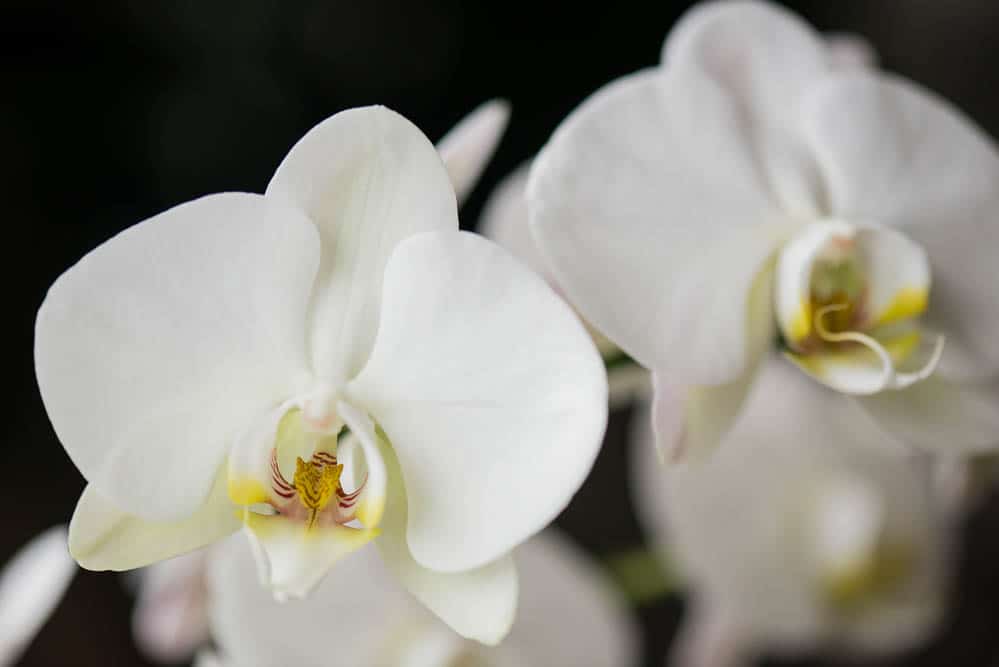
Fertilizing your orchid
Phalaenopsis orchids need to be fertilized regularly to bloom well. The best type of fertilizer to use is a balanced 20-20-20 fertilizer, diluted to half strength.
You should fertilize your orchid once a month during the spring and summer months, and every six weeks during the fall and winter.
Re-potting your orchid
If you notice that your orchid’s roots are starting to come out of the bottom of the pot, then it is time to re-pot the plant and transfer it to a larger pot.
Use a pot that is only one size larger than the current pot, and fill it with a sterile potting medium or growing media made of a fir bark mix that is designed for orchids. Special orchid pots have holes to ensure good drainage and airflow that helps prevent root rot.
To re-pot your orchid, simply remove it from its current pot and place it in the new pot, making sure that the roots are covered with potting mix. Sphagnum moss is often used to help retain moisture.
After you have re-potted your orchid, water it well and place it in a warm, humid spot.
Blooming your orchid
If you want your orchid to bloom, then you need to provide it with the proper care if you want to see new growth after the initial bloom.
Simply follow the instructions in this post to make sure that your orchid has enough light and the right amount of warmth, humidity, and water.
Once an orchid blooms, the flower spike may dry up and die. At this point, it is okay to cut it back. Eventually you will see a new spike emerge from the base of the plant in between leaves.
If you do all of these things, then your orchid should bloom within six to eight weeks.
What do you do with an orchid after the blooms fall off?
Aside from enjoying the gorgeous flowers, pruning orchids is actually one of my favorite activities. There's something so satisfying about getting rid of the old and seeing what your plant will do next.
I wait for all of my flowers to fall off. They will typically fall off starting at the base of the stem and working their way to the end, since that is the order in which they will bloom.
Once all of the flowers have fallen off, the plant will enter a resting phase. During this time, the stems might remain healthy or they might start dying. You will know if the stems are dying because they start to turn brown and dry up. This will start at the tip and work it's way down to the base.
Keep an eye on your orchid plants during this rest period and use a sharp pair of clean scissors to cut off any dead material. I like to make my cuts right above a node on the main stem. New growth will often shoot off from that node.
Take a look at the photo below. If you look at the main stems, you can see the blunt edges where I cut the original stem off right above the node. When it started to grow new spikes, I got not two, but three! That means that my original plant only had two flowering spikes and round two gave me three flowering spikes! I bet you're wishing you didn't throw your last orchid plant away after it bloomed!
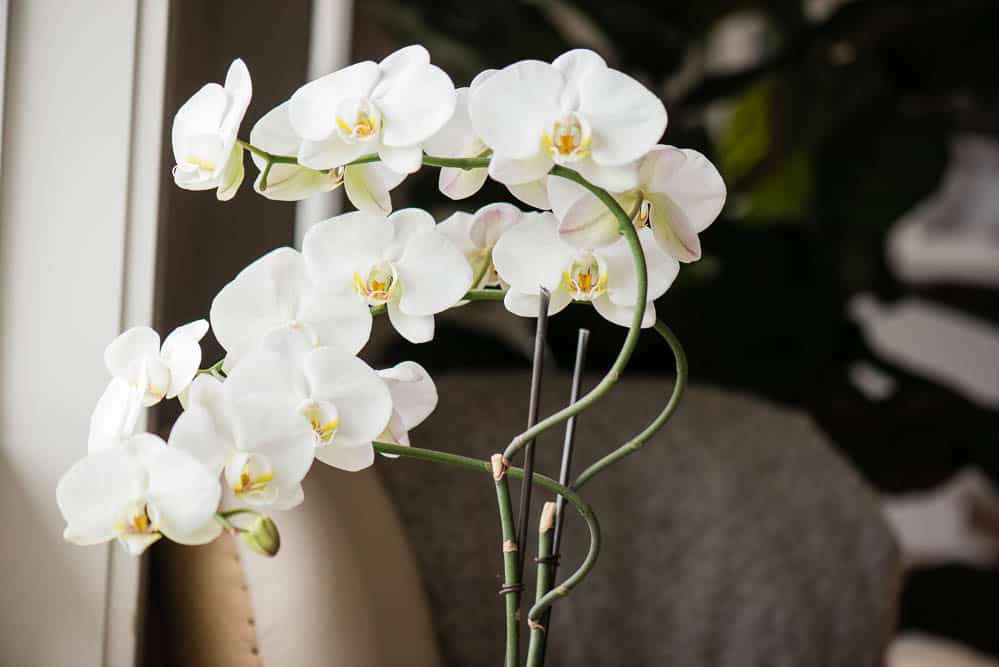
Propagating your orchid
If you want to propagate your orchid, then you can do so by division. Wait until the plant has finished blooming, and then carefully remove it from its pot.
Use a sharp knife to divide the plant into two or more pieces, making sure that each piece has at least three leaves and one flower bud.
Re-pot the divisions in small pots filled with a sterile potting mix, and water them well.
Place the pots in a warm, humid spot, and wait for the plants to bloom.
Taking care of your orchid in winter
In winter, Phalaenopsis orchids need a cooler temperature to rest, so water them less frequently and move them to a spot that receives indirect sunlight.
If the temperature in your home dips below 60 degrees Fahrenheit at night, then you should consider moving your orchid to a warmer room or placing it near a heat source.
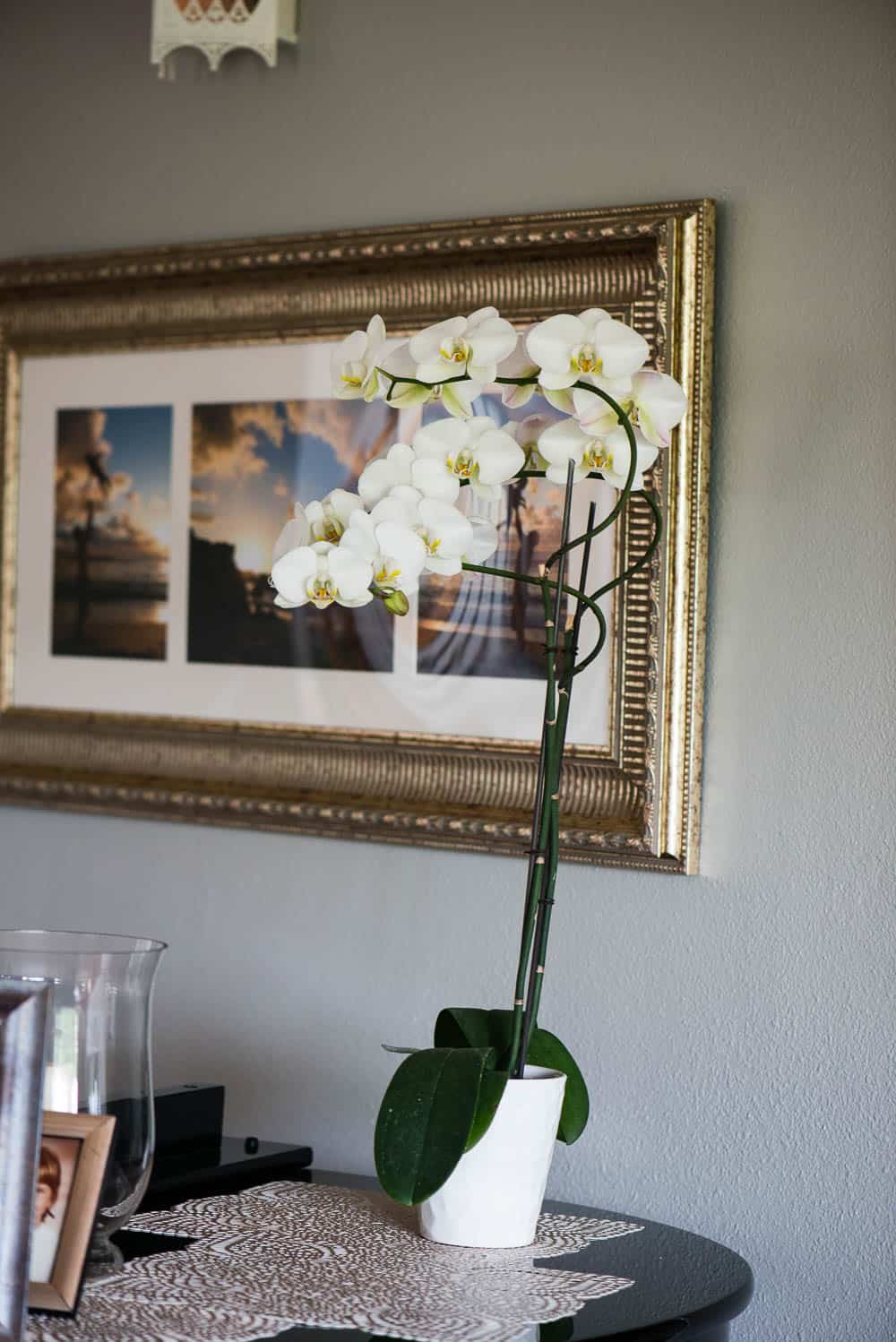
Let me know if you have any questions, advice, or suggestions in the comments below!

Shawn
This is awesome!! I was given an orchid over a year ago and I've been able to keep it alive and watch multiple blooms, but just recently I transplanted it to a new pot with regular potting soil and I think I'm killing it. Also I moved it to the opposite side of the house getting afternoon sun! YIKES! Now I know what I need to do to get it back to health. I just hope it's not too late. Do you know much about air plants? I was gifted one of those and am just praying I don't kill it, but don't really know much about them. Thanks!!
Krissy
Hey lady, I'm about 5 months late on my reply! I have to tell you - I suck at air plants. You're supposed to mist them regularly, or at a minimum give them a dunk in water with an easy shake about once a week. I usually end up killing them though!
KATHY KENDALL
It's so dry in Big Bear that I always assumed they would grow here, but my cousin has great luck with them. Her kitchen window is indirect sun so that's probably a big part of it. Reading your blog makes me want to try. I do love orchids!
KATHY KENDALL
Meant to say I assumed they wouldn't grow here...
jeanne subotnick
I have many orchids and am constantly looking for new ways and idea to keep them happy, I dearly love them and tell them so each morning. (and you thought YOU were weird) I really appreciate all your info and give you a big thumbs up! Leaving for Hawaii in two weeks and will be viewing tons of fabulous orchids just growing in the wild. Aloha
Linda Moore
Thanks so much for this fabulous explanation, as I have tossed several orchids following the drop of their flowers. I now have two that are blooming, so will certainly follow your advice. Thanks again. Linda
Alexis
Hi, Great advice. I have about 30 orchids, including ones that are serially dormant. Some I've had for several years. Here's my question: How do you deal with those awful, white mealybugs that grow on the flowers? Even organic sprays make the flowers expire prematurely. I usually pick the mealybugs off with a toothpick, which is laborious. Any suggestions?
Thanks!
Krissy
Hi Alexis, So sorry for such a late reply. I've never had any bugs like that on my orchids. Could be because I live in the PNW?
Alice Boyd
This is my second orchid, I am trying very hard to grow this one. So is it necessary to repot?I am afraid I might kill it.
Krissy
I only repot if I really need to, but almost all of the time I leave it in my original container.
Dot Blackshear
I was told not to cut where flowers died from this is my first one I received it from a friend when my husband past. I love it and would like to keep it alive but that whole stem is now brown where would I cut it and how long before a new one start to flower it had been from about October done the last flower died do I cut all the way to the bottom since it is all brown. Any help would be greatful ty in advance.
Krissy
Hi Dot, I'm definitely no expert, but as the stem dies down, I continue to cut anything dead away. Throughout the winter I give it good light and water with very small amounts (with the orchid Miracle Grow spikes in the soil) weekly and continue to trim anything that dies. Seems like it stays pretty dormant throughout the winter and in the spring you'll start to see new root/leaf/stem growth. Hope that helps! Krissy
Norma Skoglund
Hi Kristen
Enjoy your post. Love your answers
even tho you could say, I do not know.
You give a sometimes funny answer.
Told my husband , you should have
been a comedian. Learned to care for
Orchids as you— trial and error.
Buy my orchids TJ also.
Granddaughter brought me an orchid
last week and left it at my back door.
as we are distancing with the virus.
Drove 2 hours from Portland to Eugene
to deliver 😀
If you are in Eugene love to take you
to lunch OR. Maybe even cook for you—
husband and children welcome also..
2241 Fairmount Blvd. In the University
District— Big Duck fans!
For Fall, think of recipes to feed a crowd
hosting party gatherings for pre or post
Ball games. Hopefully , able to “ gather”!
And again maybe not—
Stay safe and encourage all your followers
to distance and shelter in place.
Norma [email protected]